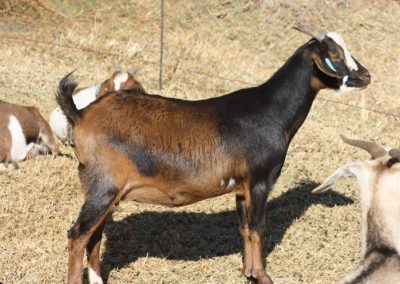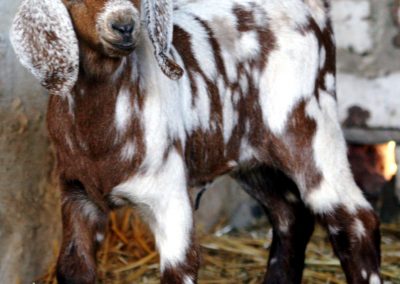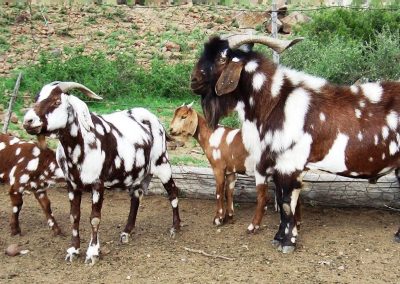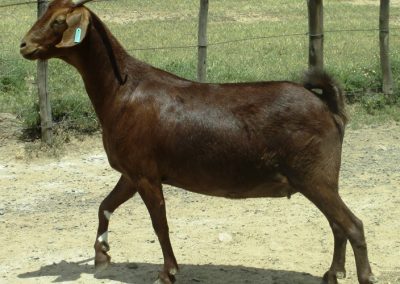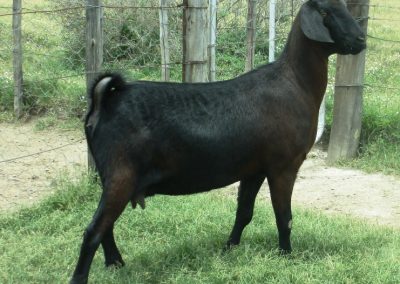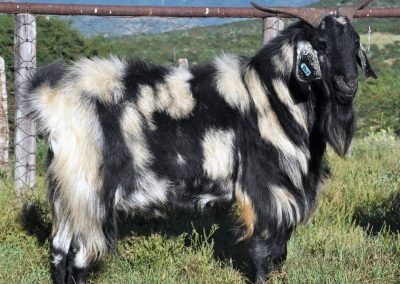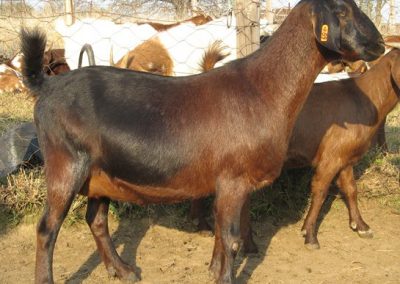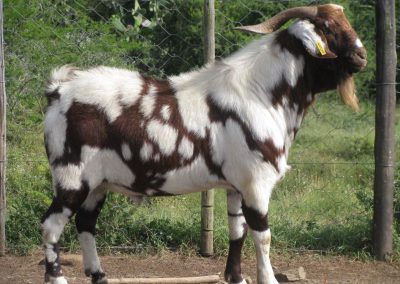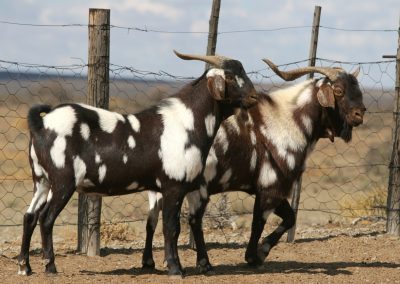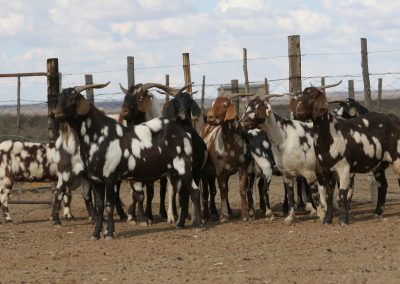
Cape Lob Ear
Distinctive Characteristics:
Dapple-, marble- and flowery patterns of various colour combinations occur generally among this strain of indigenous goats, although single colours and combinations thereof, are also found.
Distribution:
Cape Lob Ear – large framed, multi colours, lob ears
This strain originally occurred in the medium to lower rainfall area of the Eastern Cape.
According to history, the modern improved Boer Goat was developed by breeders of the eastern Cape, by using Xhosa lob eared goats, including a specific big, robust dapple coloured male goat, that formed the basis of the well known Buffelsfontein Boer Goat Stud.
This stud influenced the development of the Boer Goat in South Africa to a marked extent. Because of the wide distribution of these early unimproved “boer goats” among farmers in parts of South Africa, Botswana and Namibia, some multi-coloured progeny of these goats can still be found in these parts.
Only a handful of breeders preserved some of these original multicoloured, lob eared goats.
Body Conformation:
Head
The face is rather strong, slightly long with a profile that is flat to slightly convex (bulging) and inclined to have a more prominent convex part on the forehead between the eyes and horns
The muzzle is predominantly dark pigmented. The shade of darkness may vary.
The ears are large and droopy (hanging) {lob ears} – inclined to be more symmetrical in shape
Horns are present in both sexes. Naturally polled animals occur rarely.
This eco-type has horns that usually exceed the length of the skull in mature goats.
In females, the horns grow upwards and curve outwards.
In males, the horns are more inclined to curve backwards and outwards.
In females, the horns are of medium to large size, and in males large and heavy.
Toggles are present in some male and female animals.
Beards are present in males, and in a small percentage of females. Male beards are large.
Neck & Fore Quarters
The neck is slender in females and well attached to the shoulders.
Males have thicker, well-muscled necks and shoulders covered with long hair.
The forearm is slender in the females and heavier in the males.
The females have a fine bone structure in comparison to the heavier bone structure of the males.
Middle piece
The breed has a good length and depth of body.
Hind Quarters
The males and females are well-muscled on the inner and outer thighs.
The breed has a sloping rump.
The tail is erect and of medium size.
Legs & Hooves
Legs are strong and medium to long. Hooves are predominantly dark in colour.
Colour & Hair Covering
A wide variety of uniform colours, white, black, fawn, brown, and red-brown, pied, speckled and especially dappled-, marble- and flowery patterns, and all combinations of these colours, occurs.
Most goats have a short, glossy hair coat, and are inclined to grow cashmere in cold winters.
Occasionally some individuals are found with longer hair on the lower body and hindquarters.
Male & Female Organs
In rams, the testes are of functional size and shape, equal in size and situated near the body.
The scrotum normally has no split and is not too long.
In females, the udders are normally well shaped and well developed, with more than enough milk for
twins and even triplets.
Poorly attached or droopy udders, cluster teats, and excessively thick bottle-shaped teats are undesirable.





